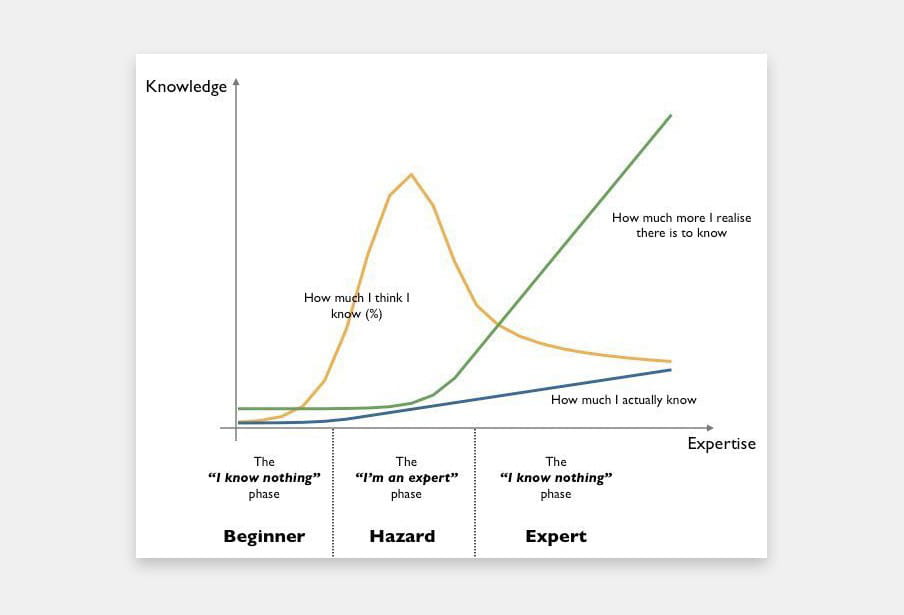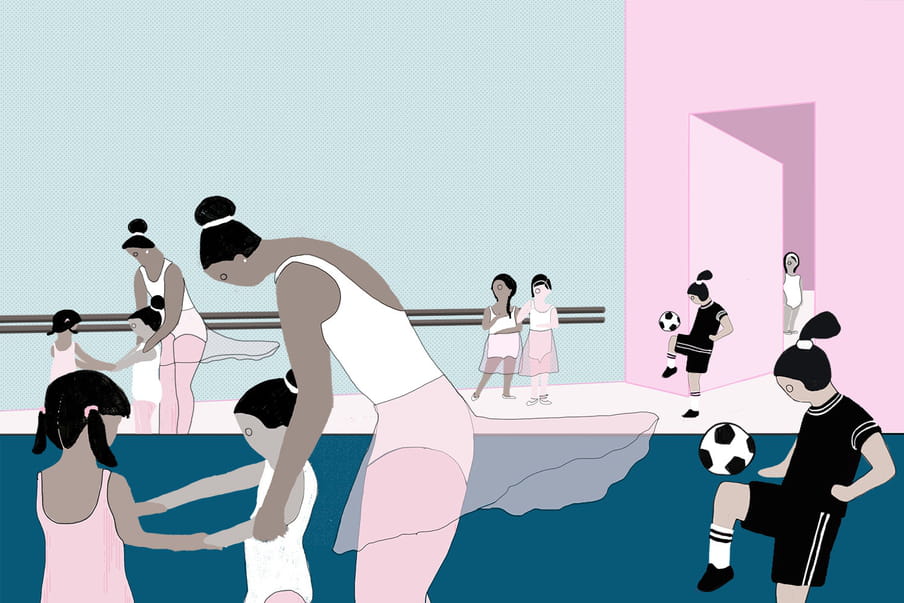Hi,
In early January, I published a piece about raising a son while trying to avoid gender stereotypes. The piece stirred up much debate and discussion. Some readers questioned the science behind the piece and why I had decided to refer to neuroscientists who question just how important the differences between male and female brains are.
So I delved into the issue. Almost two months later, I am more confused than I was before.
I discussed my state of mind with Rob, our founding editor, who shared this graph with me.

Though this graph is a joke, it’s a good reminder of how we as journalists can lose sight of where we are on our learning curve.
Right now, I’m far from being an expert. But let’s be honest: I’m a reporter, not a neuroscientist, and I’m not pursuing a PhD in this specific topic. So, what can I actually add to the current debate?
I could write about the two sides of the coin, but that has been done very well by many journalists before. This Hidden Brain podcast is a great example.
I can also point you to the books I’ve been reading.
On one side we have Gina Rippon’s The Gendered Brain, Lise Eliot’s Pink and Blue Brains and Daphna Joel’s Gender Mosaic – among others. This handy article points out some of the most controversial issues.
On the other side are those who study sex differences. They say that highlighting differences between male and female brains is important because, if studies don’t take women into account, then women will be left out when it comes to medicine. The January/February 2017 issue of the Journal of Neuroscience Research has some 70 articles dedicated to this, and the preface is accessible.
There is also Kevin Mitchell, associate professor of genetics and neuroscience at Trinity College Dublin, who believes that we are born with innate elements. He wrote an interesting article about this, and I’m making my way through his book Innate.
Overall, however, I don’t think I can add much more to the debate. That’s why I’ve decided to kill my story and share these three insights instead:
1. There is a huge spectrum of disagreement between the two camps of scientists working on this issue.
2. The area is a minefield: talking about how our sex at birth affects us is not a neutral topic. Identity, politics and gender come into it and affect the tone of scientific papers too.
3. Honesty is necessary for me to write the kind of journalism we want to do at The Correspondent. I spoke to many experts for the piece I’m killing. I feel guilty about having used up their precious time, but I think it’s necessary to know where to set your limits.
I will keep reading about this issue and point out books and podcasts that I come across. And please feel free to share your insights with me.
Levelling the playing field

If you speak Spanish, this is a podcast I am proud of. I worked on it for a long time with my colleague Claudia Jardim, and it has just come out on Radio Ambulante.
It tells the story of a Brazilian girl, Laura Pigatin. When she was five years old, she was the only girl in her class to decide to play football and not take ballet classes. Years later, she is still going strong, despite all the challenges she had to face. Even though Brazil is a football-crazy country, only 40 years ago, women were banned from playing it and there are still many who believe that football is only for men.
If you don’t speak Spanish, you can also find the transcript translated into English.
Until next time,
Irene
 Do you want to receive my newsletter in your inbox?
Subscribe to my weekly newsletter where I talk about sexuality, reproductive rights and early childhood, discuss the best ideas from members and share updates on my journalism.
Do you want to receive my newsletter in your inbox?
Subscribe to my weekly newsletter where I talk about sexuality, reproductive rights and early childhood, discuss the best ideas from members and share updates on my journalism.

